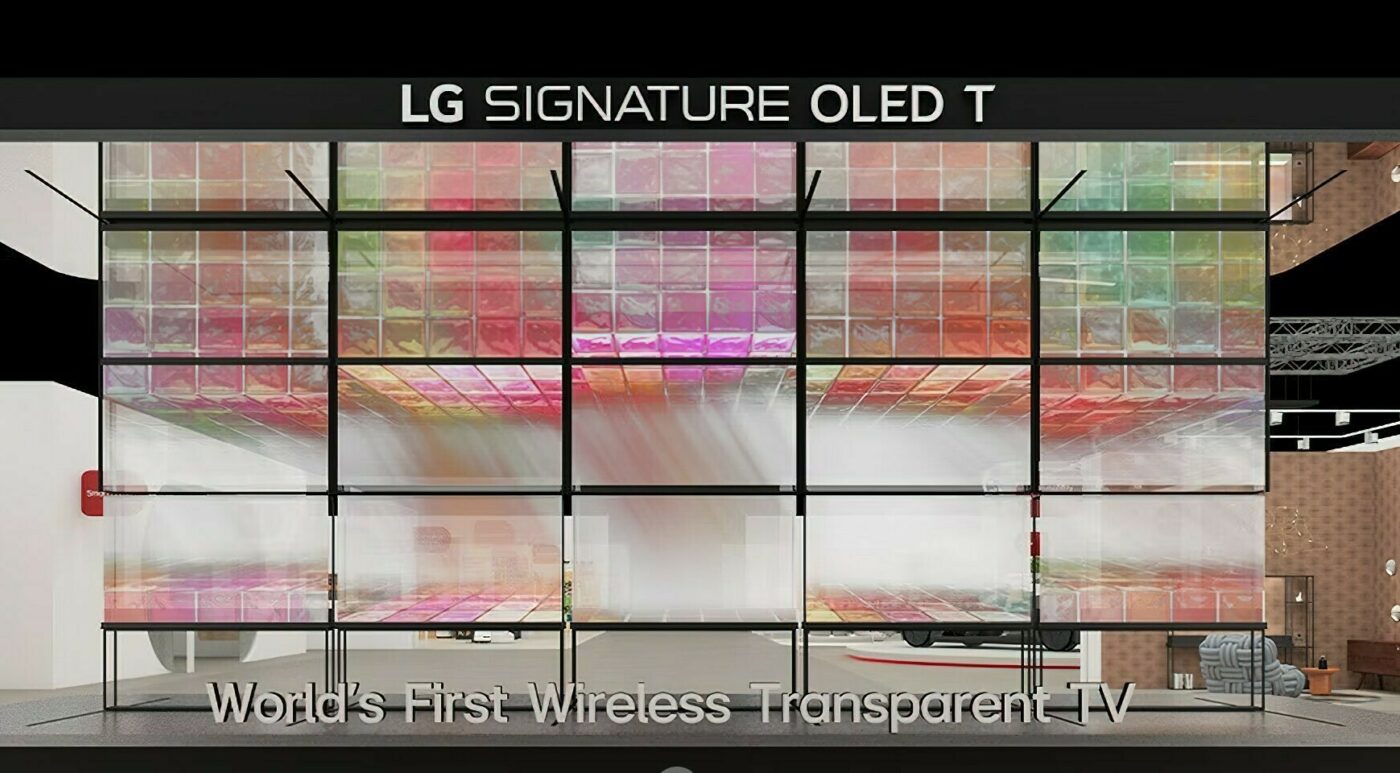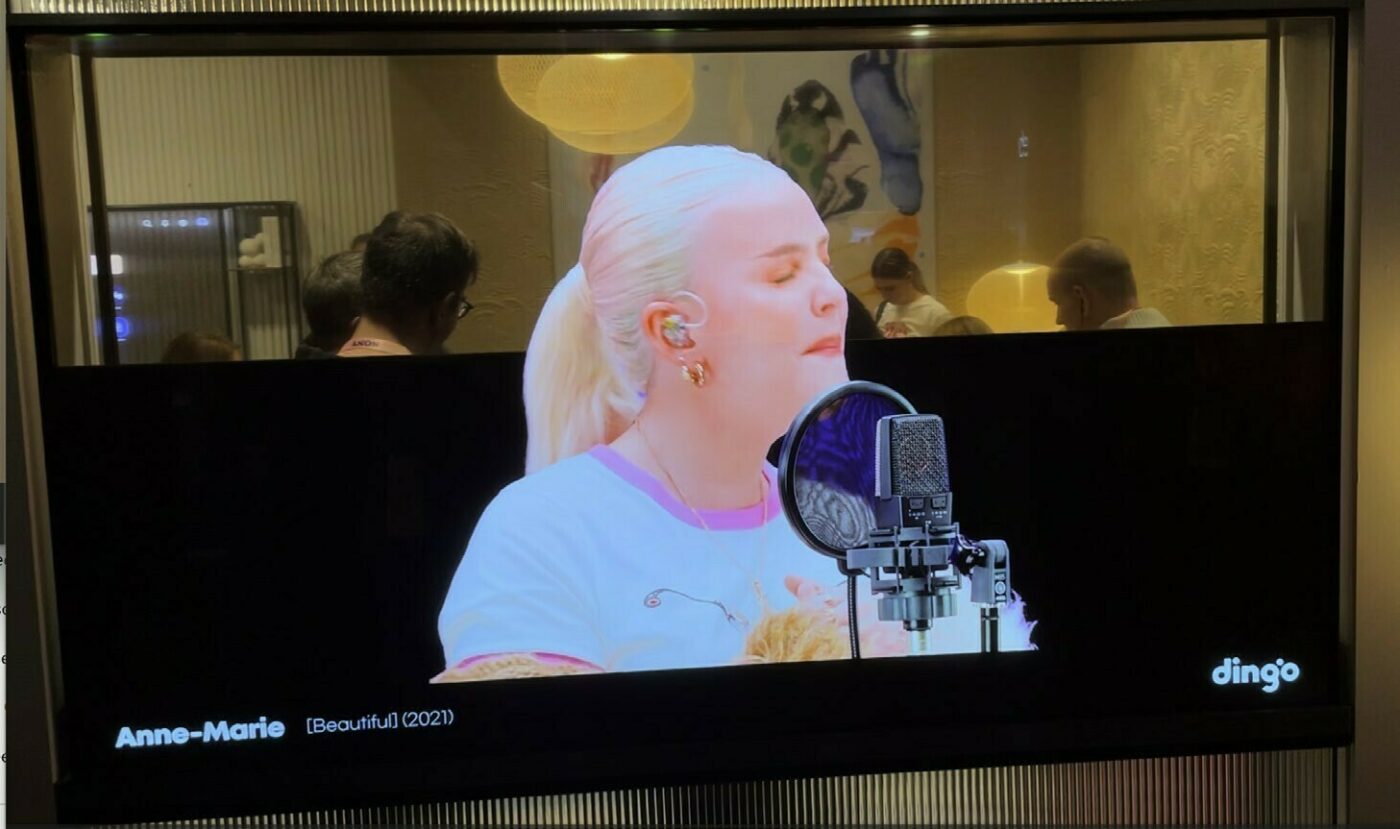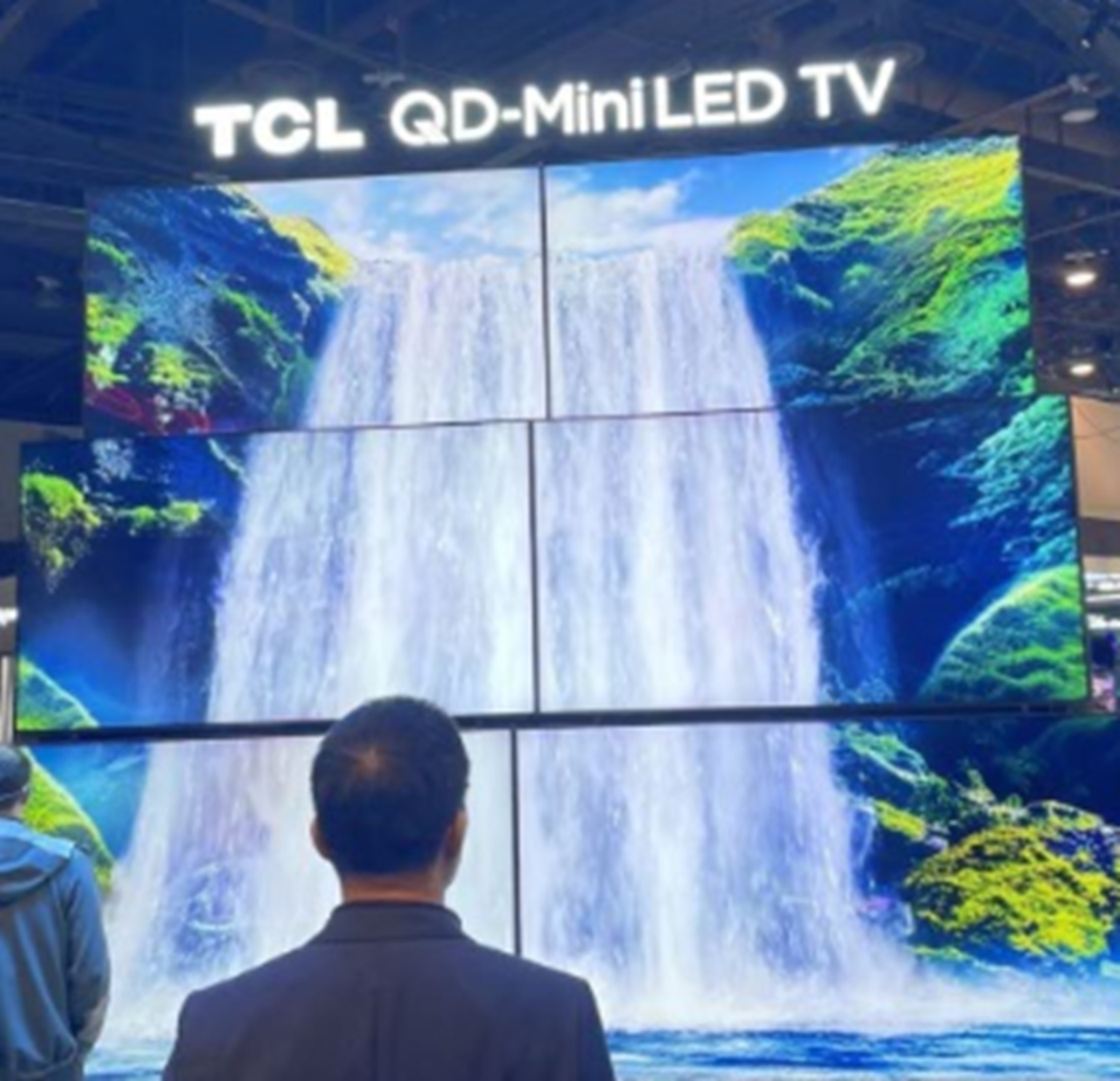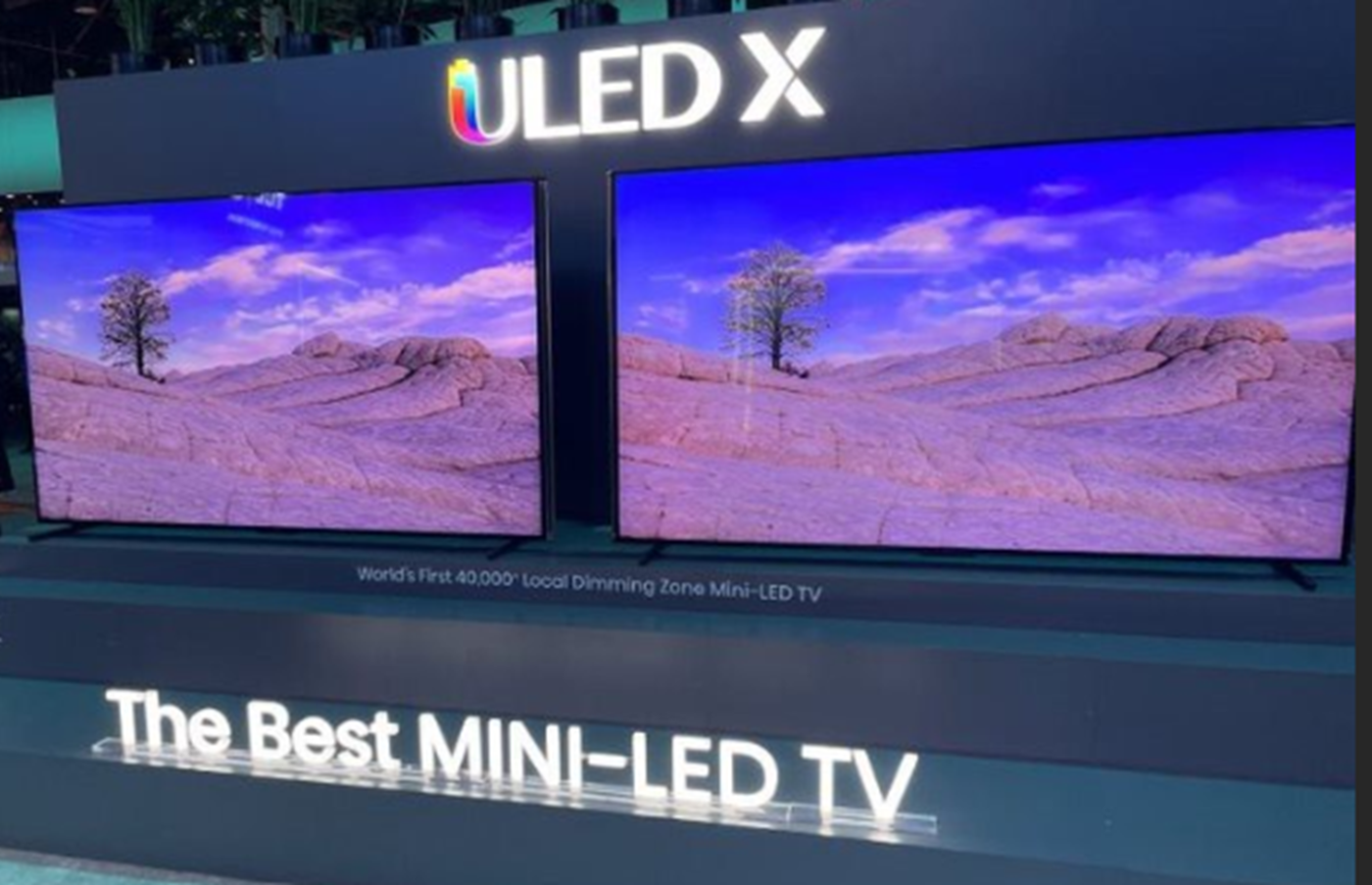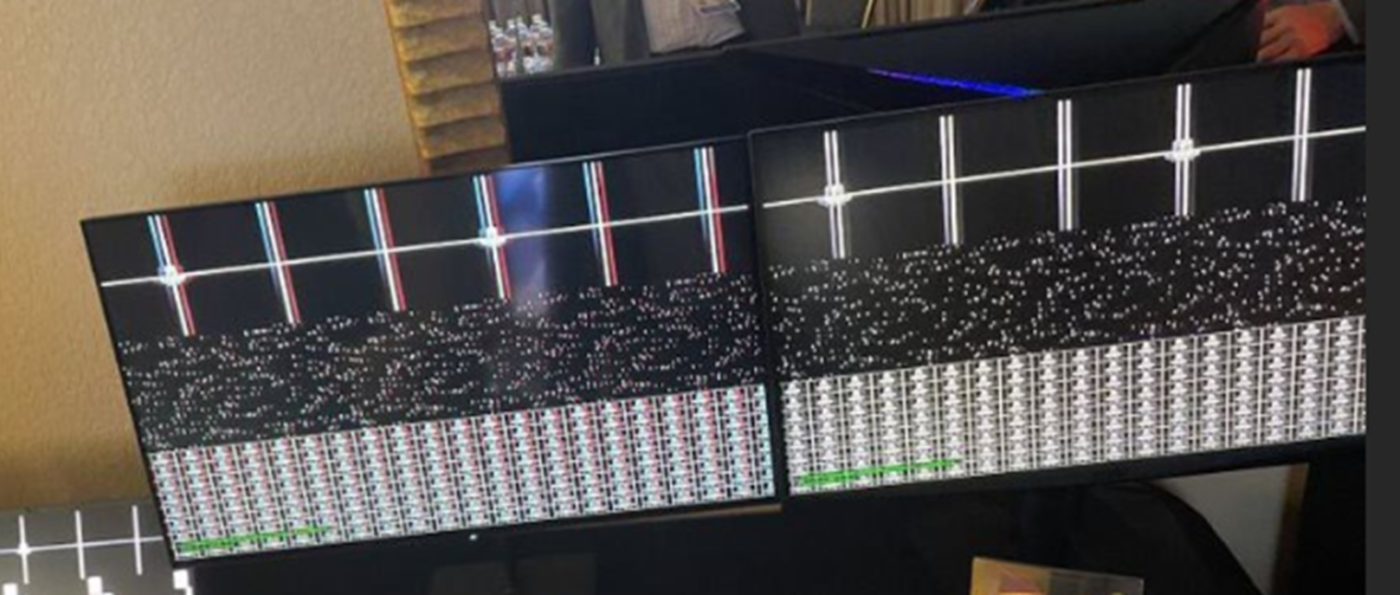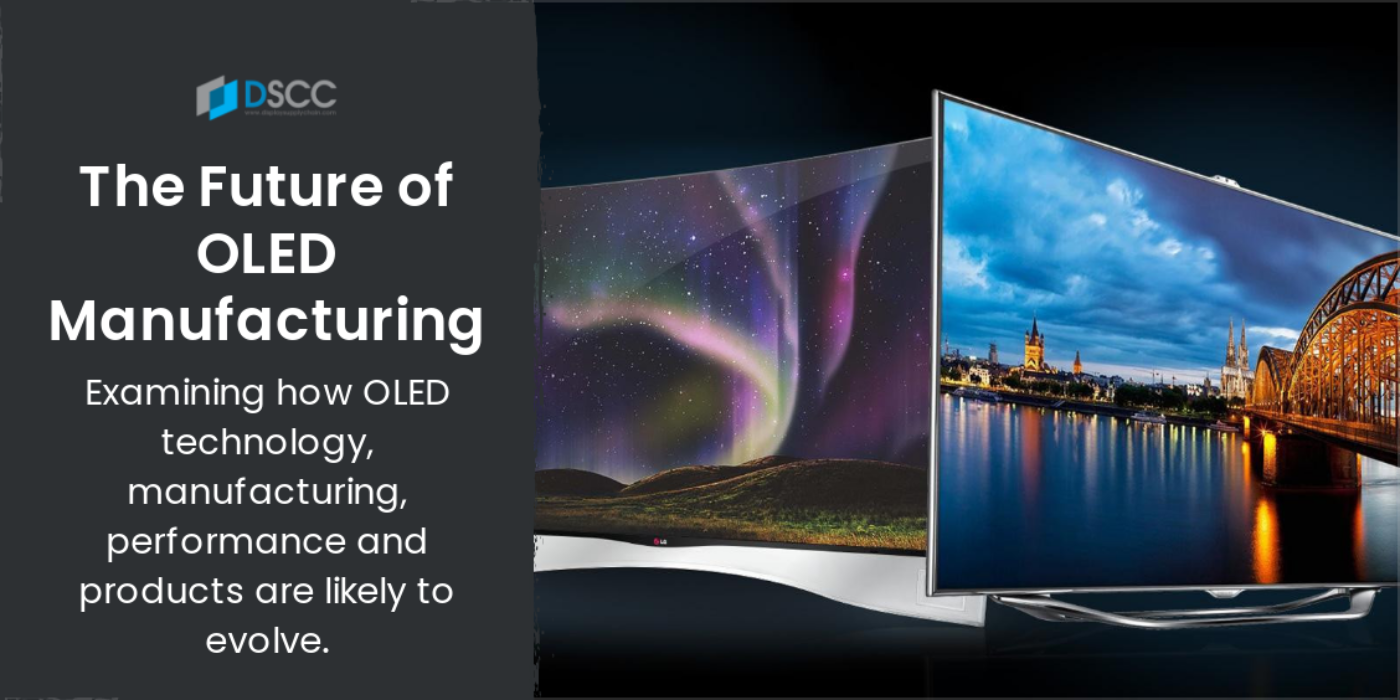CES 2024報告(2) TVと大画面技術
冒頭部和訳
CESでは例年、卓越したTVと大画面技術が発表されてきたが、CES 2024でもコンベンションフロアとプライベート展示の両方で新製品と豊富な技術が展示された。主要ブランドであるSamsungとSonyは今年後半に自社で製品発表会を開催予定のため、CESでのTVのデモンストレーションを見送ったが、それでも見るべきものはたくさんあった。
これらDSCC Japan発の分析記事をいち早く無料配信するメールマガジンにぜひご登録ください。ご登録者様ならではの優先特典もご用意しています。【簡単ご登録は こちらから 】
CES 2024: TV and Large Screen
※ご参考※ 無料翻訳ツール (DeepL)
CES has always been the preeminent exhibition for TVs and large screen technology, and CES 2024 had new products and an abundance of technology on both the convention show floor and in private exhibits. Although two key brands (Samsung and Sony) decided to skip TV demonstrations at CES in order to hold their own product launches later in the year, there was still a lot to see.
LG Electronics took its customary position at the entrance to the Central Hall in the Las Vegas Convention Center (LVCC) and once again wowed attendees with OLED TV technology. This year’s entry exhibit featured the company’s OLED T transparent OLED in a large array. As is often the case at CES, LG’s entryway was crowded with onlookers taking pictures and video even on day three of the exhibition.
LG Electronics OLED T Showcase
While the showcase in the entryway was impressive, LG really intends to introduce the 77” 4K OLED T as a new product, starting in the second half of 2024. Because a transparent display cannot make black, LG employs a simple solu- tion: the TV comes with a black screen behind the OLED display that raises or lowers. Raise the black screen to see a conventional OLED picture (very high performance), lower the black screen to have a transparent TV.
LG 77” 4K OLED T TV as the Black Contrast Screen is Halfway Lowered
Samsung VD Innovation Room
The private exhibit for Samsung’s TV business demonstrated their three flagship display technologies – MicroLED, QD MiniLED 8K, and QD‑OLED, in that order. They did not include any White OLED demonstrations.
For MicroLED, the exhibit was centered on the LED technology, they said they were using 25µm LEDs, and demonstrated a small vial with thousands of the LEDs like grains of sand. They had a small demo of their backplane tile, it appeared to be about 11” in diagonal and roughly 0.5‑0.7mm thick; they are printing circuit elements at the edges of the backplane tiles. The 4K 88” MicroLED TV of course was impressive in picture quality.
Samsung continues to push its 8K TV product line which they call Neo QLED 8K with a MiniLED backlight. The 8K demonstration was led by a cinematographer from Australia named Pawel Achter. Achter made the case that the 8K system was an entirely different medium from TV. With the tremendous detail in the picture, scenes need to be slower and last longer in order for the viewer to take in all the visual information. Camera focus is much more critical. Achter likened the shift from 4K TV to 8K as similar to the shift in standard cinema to IMAX. Achter owns a Samsung 85” Neo QLED 8K and when asked about MiniLED vs OLED with the latter having pixel‑level contrast, Achter maintained that his TV was excellent for “microcontrast”, as good as OLED.
Next Samsung demonstrated its AI upscaling technology which they called Quantum Super Resolution. They made the point that with the growth of streaming, even FHD pictures sometimes need to be streamed at a lower frame rate because of bandwidth limitations. So the TV has to compensate for the limited bandwidth, and they showed examples in baseball, where on the competing product the ball would flicker or blur as it traversed across the screen. Another demonstration showed scrolling text with a similar problem which Samsung has solved with its AI system.
In QD‑OLED, Samsung is introducing this year an AR film on its flagship model the S95D. They demonstrated a competitor model with a glossy finish next to the S95D with a flat finish; the S95D had barely perceptible reflection from a bright room light, while reflection was clear and disturbing on the competitor model.
Samsung demonstrated the flexibility of its Lifestyle projector, showing that multiple projectors can be combined to generate a larger image, or by overlapping two projectors generate a brighter image. Their algorithm for correcting the projector output allows projection onto non‑flat surfaces like curtains or even the corner of a room.
In its The Frame TV, Samsung has always had an AR film with a matte finish to appear like a painting. Now they have added an algorithm that allows the display to be even more like a painting. When the color of the ambient light changes, the display changes the color mix, such that it appears as the painting would appear under the different color temperature.
In Samsung’s public exhibit, their “Samsung Screen Experience” section included less complex descriptions of most of these technologies, plus a demonstration of a transparent MicroLED display with an LCD picture set 1‑2 feet behind the MicroLED and showing a sports event, as if the MicroLED was a window in a stadium. They also had a demonstration of the production path of MicroLEDs, including steps for Packaging, Cali- bration and Assembly, perhaps in an effort to illustrate how difficult it is to make Samsung’s MicroLED TVs which remain priced above $100,000.
Ross and I both had a chance to see the private exhibitions for LG Dis- play and Samsung Display which covered the latest advances in each company’s large‑screen OLED technology. You can read the details in Ross’ note, but the key theme for the two Korean giants was increased peak brightness for OLED TVs.
TCL Exhibit Entryway with 98” QD-MiniLED TVs
In contrast with the Koreans, Chinese TV brands stuck with LCD technology and highlighted big screens. TCL highlighted its leading position in what it called “ultra-large screen TVs”, as the company leads in worldwide sales of 98” TVs. TCL also highlighted its history as the pioneer of MiniLED technology and described several new milestones achieved in 2023: the first QD-MiniLED with more than 5000 dimming zones, the first with more than 20,000 zones, and the largest QD MiniLED TV. On that last point, TCL announced that it would introduce a 115” QD MinLED TV in the summer of 2024 at a list price under $20,000. This would seem to be a more affordable alternative to Samsung’s MicroLED TVs.
TCL’s sister division China Star (CSOT) held some technology demonstrations in the TCL exhibit. These included a 27” 8K 120Hz IGZO MiniLED commercial display with 5000+ zones and variable refresh rate covering 24-120Hz, plus a 57” Dual UHD MiniLED curved gaming display with R1000 curvature, 32:9 aspect ratio and more than 11,000 zones. CSOT demonstrated what they called the “world’s first 34” MiniLED R1000 bendable display”, which like an LG OLED monitor product introduced last year has the capability for variable curvature between flat and R1000. The bendable gimmick is certainly harder to achieve with an LCD display compared to OLED.
Finally, CSOT demonstrated a couple of OLED displays, including a 14” Inkjet Printed OLED with 2880x1800 resolution which comes to 243 PPI, plus a 31” 4K IJP “Dome Gaming Display”, with curvature in both the horizontal and vertical axes. For some reason, CSOT described the curvature not with a radius but in terms of radians, claiming 1.2 and 0.4 radians in the horizontal and vertical axes, respectively.
TCL, like Samsung, LG and others, also included a demonstration of its MicroLED TV technology with a 163” 4K MicroLED. While Samsung offers its MicroLED TV today, TCL described this as the “immersive large screen of the future”.
TCL has held the same exhibits space near the east end of Central Hall in the LVCC for several years now, but they had a new neighbor in Hisense, which moved from a smaller space in the southeast corner to a much larger space near the center of Central Hall. Hisense looks clearly to be targeting TCL as its competition with a demonstration facing the TCL booth of what it called “The Best MiniLED TV”.
Hisense Entry Exhibit – Directly Across from the TCL Exhibit
The TVs facing TCL were 110” 4K MiniLEDs with 40,000 local dimming zones and Hisense claimed were capable of 10,000 nits. While TCL said it would launch its 115” MiniLED TV this year, Hisense said that it had no timeline for the introduction of the 110” TV. Elsewhere in the Hisense booth was an 85” 8K MiniLED TV intended as a technology exhibition (Hisense does not plan to introduce any 8K products) and a 75” ULED MiniLED which the company claimed was “the thinnest MiniLED TV”.
Although Hisense has sold OLED TVs in the past, there were no OLEDs in the Hisense exhibit at CES 2024. The company did exhibit a lineup of laser projection TVs which have sold well in China.
In a smaller space in the Central Hall Skyworth had a booth with TV offerings including several that target Samsung specialty TV products. Skyworth had an Outdoor TV with 3000 nits brightness and rugged construction capable of withstanding the elements, an erstwhile competitor to Samsung’s The Terrace, plus a copycat of Samsung’s The Frame which Skyworth labeled The Canvas.
Skyworth has cooperated with Google for its TV operating system, and all Skyworth TVs sold in the US will have a Google TV OS. The Skyworth representative said that Google, not Skyworth, will take the revenues from advertisements and sponsorships on the home screen and menus.
An Austrian company called C Seed demonstrated what they called an unfolding TV. This 137” 4K LED TV (not Micro- but conventional LED) is intended for consumer use, and the C Seed representative noted that some of its B2B customers had asked for a consumer version of LED signage displays. The 137” version which was shown at CES 2024 employs 0.7mm LEDs, while a smaller 103” version uses 0.4mm LEDs. The display folds into five vertical panels, and when folded forms a package with dimensions roughly 2 m x 30cm x 30cm.
C Seed 137” 4K LED TV Unfolded (L) and Folded (R)
Finally, in a private exhibit Shoei Chemical, the new parent of QD maker Nanosys, demonstrated its quantum dot technology. Similar to prior years Nanosys included a demonstration of the weak point for its competitor in wide color gamut solutions, the KSF phosphor. KSF has a slow response time, and Nanosys showed two demonstrations illustrating issues. Both involved test patterns with oscillating features. In the first, white blocks oscillating would turn cyan because the red phosphor cannot turn on fast enough. In the second, vertical white lines appear with color fringes.
Nanosys Demonstration of KSF (L) vs. Quantum Dot (R). Still Picture of Moving Pattern, Note Color Fringes on KSF
In discussion with the Shoei/Nanosys representative, they indicated that Nanosys post-Shoei acquisition will have little change. Nanosys is now the R&D arm of Shoei, and all QD manufacturing is done in Japan. Shoei is close to completing a new facility to make QDs.
Nanosys is not bullish on color conversion for MicroLED for selfish reasons; it does not consume many QDs. Nanosys thinks that TCL will wind down its IJP OLED activity and shift to ELQDs. TCL is staying with Cd-based QDs.
Nanosys claims that there has been great progress on Electroluminescent QDs (ELQD). A joint paper between Sharp and Nanosys will be presented at DisplayWeek 2024 highlighting the progress of this technology. Nanosys now thinks ELQDs are less than five years away.
Nanosys included a demonstration of TVs that helps to explain the current state of the premium TV market. The Nanosys demo presented three 65” TVs which they said represented the top TVs on ratings.com at three price points:
- 65” Hisense U6K QD MiniLED, $500
- 65” Sony X93L QD MiniLED, $1500
- 65” Sony A95L QD OLED, $2500
For Nanosys, the main point was that QD technology is available at a wide range of price points and captures a leading position. As a side note, however, in a side-by-side-by-side comparison I noted that even with my trained eyes it was very tough to tell the difference between the $500 Hisense and the $2500 Sony QD-OLED. This aligns with the recent data on the premium TV market, where Hisense and TCL have gained share with affordable MiniLED products as consumers are deciding that the incremental performance improvements of OLED do not justify the higher price.
Finally, one trend that I noticed at CES 2024 is an increasing number of TV products with low refection screens. As noted above, Samsung will have an AR film on its flagship QD-OLED TV. Skyworth demonstrated TVs with a matte finish instead of a glossy screen to reduce specular reflection, and TCL claimed that its upcoming 115” MiniLED TV will utilize “leading low reflection and soft light screen technology.” This may be part of a trend which we will watch in coming years.
---------------------
注目新刊のご案内
Future of OLED Manufacturing Report 最新版が発刊!将来のIT/モバイル/TV向けOLED製造における主要リスク/課題/期待されるソリューションが明らかに ※全頁掲載サンプルをお求めください
Learn More
